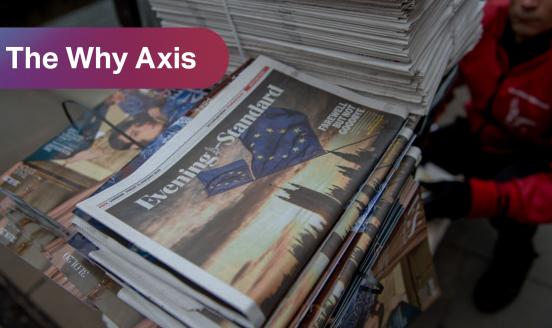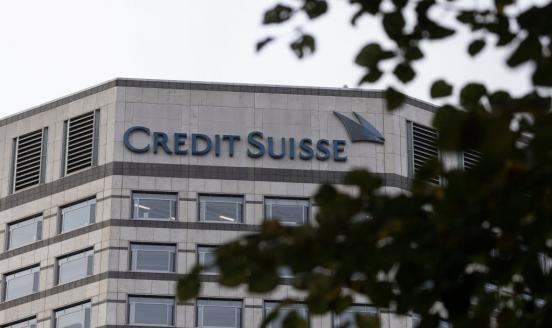European capital markets union: make it or break it
Capital markets union has not delivered, but it should be given a last chance, with a focus on supervisory integration

The European Union’s capital markets union (CMU) project will soon celebrate its tenth anniversary. CMU was coined by Jean-Claude Juncker on 15 July 2014, in his maiden speech to the European Parliament as president-elect of the European Commission. In promoting the idea, Juncker was probably motivated by concerns about the trajectory of the United Kingdom, which was becoming increasingly estranged from the momentum of institutional build-up happening in response to the euro-area crisis.
The CMU project, the reasoning went, would place the UK at the centre of a happy vision of EU integration that would be naturally London-centric, given the City’s dominant role in Europe’s capital markets. Simultaneously, CMU echoed policy concerns raised by the European Central Bank and others about the need for capital market integration to increase the EU financial system’s resilience against asymmetric shocks, while not requiring further fiscal integration.
Something for everyone, it seemed. But the price was an in-built lack of clarity on the project’s actual aims, and even more so, of its policy content. The political imperative not to generate any controversy with London meant that the CMU would only prioritise incremental regulatory adjustments. The implied rejection of any more ambitious options belied the very semantics of capital markets union, which promised – like the banking union initiated in 2012 – something more than business as usual.
The European Commissioner then in charge, Jonathan Hill, rationalised this contradiction by trumpeting his focus on “low-hanging fruits”, as if the EU had been neglecting its orchard in the previous 15 years of near-continuous financial-sector reform initiatives. Predictably, not much happened, either before or after the Brexit referendum that removed the CMU’s initial motivation altogether.
Ten years on, the CMU project’s main features appear largely unchanged from the time of its birth: big on rhetoric, small on policy. Political leaders at EU and national levels pay eloquent lip service to the vision of well-developed, liquid and deep capital markets, which would boost EU strategic autonomy, power the green transition, enable the blossoming of innovative start-ups and their rapid growth into global champions, and perhaps eventually rival Wall Street. When it comes to action, things suddenly become less awe-inspiring.
To be sure, the EU machine has churned out useful capital markets legislation over the past decade, including the European Single Access Point for corporate disclosures, the so-called consolidated tape of transactions data, or the European Long-Term Investment Funds, which may become a successful investment product. This track record of regulatory reform, however, is no more than in line with the usual pace of regulatory harmonisation as seen before CMU was invented.
As for the stated aim of fostering market integration through convergence in structural areas such as taxation, insolvency law or pension finance, the achievements so far are too minuscule to mention, suggesting that any fruits in these areas outside the core scope of financial services policy should be viewed as rather high-hanging. The ECB has summarised a widespread perception by stating bluntly in a 7 March statement on CMU that “there are no more low-hanging fruits to pick in this area”.
Is the CMU project doomed to fail? Possibly. But it can and should be given a last chance. Between the low-hanging fruit of marginal adjustment and the high-hanging ones of taxation, insolvency and pensions, a mid-hanging fruit beckons that may not be out of reach: supervisory integration, namely the build-up of an authoritative EU capital markets supervisor – a “European SEC”, as ECB President Christine Lagarde called it, in reference to the powerful US Securities and Exchange Commission. This could catalyse the gradual dismantling of hidden barriers to cross-border market amalgamation.
In practice, supervisory integration would entail the reconstruction of the existing European Securities and Markets Authority with new governance, a new funding framework and possibly new locations that would pave the way to a significant expansion of its direct supervision activities. The European Commission attempted something like that in 2017, and failed. But chances of success are greater now, for at least three reasons.
First is a sense of urgency, driven by the perception in the EU of being left behind by US capital market dynamism and the increasingly pressing necessities of the climate transition and of safeguarding EU security. Second, after ten years, the inability of the low-hanging-fruits approach to deliver transformational outcomes has become inescapable. Third, there now exist compelling proofs-of-concept of integrated European supervision in adjacent areas, principally European banking supervision, which has been generally successful, and also the soon-to-be-established Anti-Money Laundering Authority. Against that backdrop, the idea of EU-level capital-markets supervision, which ten years ago could still be dismissed as utopian, looks increasingly like a no-brainer.
Making it happen would finally transform the CMU into a substantial project. Conversely, if a combination of nationalistic reflexes and entrenched special interests stop it happening, then the time may have come to finally stop talking about capital markets union.
This First Glance is based on the author’s in-depth analysis published by the European Parliament.



